Written by R. Steven Shisler, Esq. for the RSDSA blog.
Frequently, I receive telephone calls from potential clients who have, frankly, severely damaged their ongoing claims or lawsuits. When you pursue legal claims, whether they involve social security, workers’ compensation, medical malpractice, or other types of personal injury claims, remember that these common mistakes could lose your case.
1. Do it Yourself
Representing yourself is definitely not advisable because you don’t have the knowledge, skills or the experience of a practicing attorney who specializes in medical claims. This is especially true for social security and workers’ compensation matters. Many claimants think they will receive benefits by simply completing application forms. To be successful, retain counsel before you begin the application process.
2. Delay or Fail to Take Action
I had a client who sought representation for a workers’ compensation claim. Although he had been receiving workers’ compensation for a job- related injury that had occurred 11 years earlier, His employer’s insurance carrier wanted to revoke the client’s benefits. Unfortunately, when the accident happened, the client was afraid he would lose his job if he sued his employer.
Unfortunately, he discovered, too late, that his best opportunity for compensation would have been a products liability claim against the manufacturer of the defective machine that had caused his injury.
The products liability claim would have been worth hundreds of thousands of dollars. His workers’ compensation claim amounted to a relatively small sum.
3. Retain the Wrong Attorney
The best way to find an attorney is to ask people you know. Good attorneys get most of their clients by word of mouth, as opposed to those who advertise on television or in the Yellow Pages. A general practitioner probably lacks the knowledge to handle cases involving CRPS that involve highly specialized areas of the law.
Hire an attorney who comes highly recommended from a source you trust, and then research his (or her) background. Do not be afraid to ask the attorney about his level of experience with your type of case. Ask for names and telephone numbers of references. Find out his success rate. Look him up in the Martindale Hubbel law directory or other directories of attorneys.
Trust your instincts; first impressions are critical. If the attorney does not impress you at the first meeting, what kind of impression do you think he is going to make on a judge or jury? Additionally, never be reluctant to fire your attorney if you lose confidence in him, but find new counsel first so there is no gap in representation.
4. Hire and Fire Multiple Counsel
Most attorneys will not be concerned if you want to fire your current counsel and hire a new one, unless you have gone through three or four attorneys. This shows the attorney that you are most likely the problem.
5. Be Cheap
You get what you pay for. If the case needs specialized knowledge, the fee will be higher. For an attorney to handle an CRPS case, he must have knowledge of the particular area of the law involved, knowledge of medicine generally, and knowledge of CRPS in particular. Medical malpractice cases and product liability cases are particularly complex and involve a great deal of work as well as specialized knowledge. Ask what the customary fee is for your type of case.
In Philadelphia, the standard fee for a medical malpractice, products liability, or personal injury case is a 40% contingent fee. If you win, the attorney gets 40% of the gross recovery. If you lose, you pay nothing. In Pennsylvania, the maximum fee for a workers’ compensation case is 20% and or a social security disability case, 25% of any past due benefits with a maximum fee of $4,000.
6. Treat with Multiple Medical Providers
One of the biggest problems with CRPS cases is the damage that is done when the client jumps from doctor to doctor in that pain driven, panic-stricken search for the miraculous cure. If you have CRPS, you have a horrible condition that is likely to be permanent. Your goal should be to reduce your pain and improve the quality of your life .Going from doctor to doctor creates a number of problems. The defense can argue that you really do not have a case, but simply changed doctors until you found one who would report what you wanted. You might be portrayed, for example, as being emotionally unbalanced. To insurance claims representatives companies, voluminous records from many medical providers raises a flag.
Multiple medical providers may result in duplications of treatment that negatively influence juries and judges, and increase your costs.
Medical experts charge substantial sums to testify and reimbursement of these expenses is deducted from your recovery.
If your insurance coverage has been exhausted or if there is an insurance subrogation lien, you may have to pay the doctors.
7. Fail to Communicate with Your Doctor
Tell the doctor when you have new symptoms and about your limitations. If you testify regarding certain complaints or limitations and these are not addressed in the medical records, your testimony lacks support. Do not be macho and omit complaints or symptoms in your discussions with your doctor.
8. Be a Motor Mouth
One of the most damaging things that clients do is talking too much to the wrong people. While it is important to communicate clearly to your doctors, other medical providers, and lawyers, talking too much to others is dangerous. Be alert all the time, and remember that all those “nice” people you talk to might be recording everything for their records.
9. Thinking About Your Actions on a “Good” Day
CRPS pain waxes and wanes. There are bad days, and then there are good days when the pain, although severe, is more bearable. The private investigator who may have you under surveillance will not document anything that supports your claim. Be especially careful on the good days, enjoy yourself, but be aware that if you are outside, you may be under surveillance. That videotape will be shown to a jury after you testify about your difficulty walking, reaching, using your injured hand, and so on.
10. Disregard Your Attorney’s Instructions
If you have chosen the right attorney, he has a great deal of knowledge and experience. If you do not trust his opinions and his instructions, then hire someone else.
If you really want to lose your case, disregard your attorney’s instructions and speak with insurance company representatives when they telephone you. Later you can tell your attorney that you only answered a few questions, and they were not damaging, in your opinion. That way, your attorney will be surprised when he receives a copy of your damaging statement. Better yet, communicate with the representative of the insurance company but never tell your lawyer about it.
11. Lie
A great way to lose your case is to lie. Lie or exaggerate to your doctor about your symptoms and complaints and your responses during his examination. That way the medical records will be contradictory and easy for the defense to challenge. Lying during the “independent” or defense medical examination is also a great way to lose your case. Then the defense doctor can testify that none of your symptoms made sense, that they did not follow neurological patterns, that you are exaggerating, or can otherwise damage your credibility.
You can destroy your case by lying to your attorney. A lie is especially effective if you completely change your story at trial from what you have previously represented in your pleadings, deposition, and medical records. There is never a reason to lie.
12. Don’t Do Your Homework
You win a case because you have the best lawyer, you are well prepared, you testify appropriately, and you have the best evidence. The case is always won in preparation, long before trial. Keep appointments with your doctors to provide evidence of consistent medical treatment without unusual gaps in treatment. Listen to your attorney’s instructions during preparation for defense medical examinations, depositions and hearings or trials. Do your “homework,” such as reviewing your medical treatment and other subjects.
Conclusion
Hopefully, by showing you how to lose your case, you will think about how you can win because the weakest part of the case is often the client. Be aware of your role and the impact of your choices and actions on the outcome of your case. Think, be selective, communicate about your injuries and your case th only the appropriate people (your lawyer and your doctor). Be aware of the things you say and do in public. Take an active role in your case, follow instructions, and work closely with your attorney for that successful outcome.
R. Steven Shisler, Esquire is an attorney whose practiceconcentrates in plaintiffs’ medical malpractice, products liability and other personal injury matters involving nerve injuries and reflex sympathetic dystrophy. He is an RSD survivor.
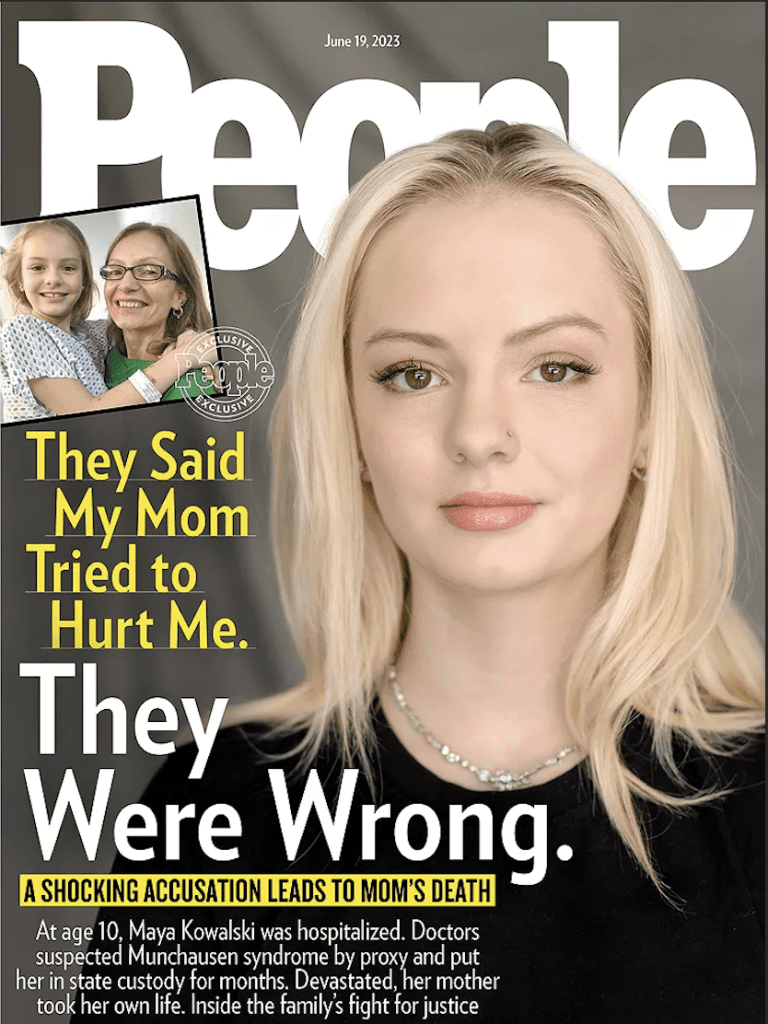

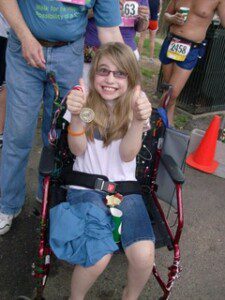 When I close my eyes, I grow wings and fly; I use my wings to fly towards the sky. I abandon my reality of chronic illness as I soar towards freedom. Tonight, I am safe in my bed – away from it all… Away from my dreaded wheelchair and even more, away from the pain of living a difficult life. I fly to unknown places, and I meet new people; I have places to be, and I have people to see. My adventure comes to an end with the sound of my alarm clock piercing through the silence. It is morning now and my eyes are open. The adventure is over although one thing remains the same. I have places to be, and I have people to see.
When I close my eyes, I grow wings and fly; I use my wings to fly towards the sky. I abandon my reality of chronic illness as I soar towards freedom. Tonight, I am safe in my bed – away from it all… Away from my dreaded wheelchair and even more, away from the pain of living a difficult life. I fly to unknown places, and I meet new people; I have places to be, and I have people to see. My adventure comes to an end with the sound of my alarm clock piercing through the silence. It is morning now and my eyes are open. The adventure is over although one thing remains the same. I have places to be, and I have people to see.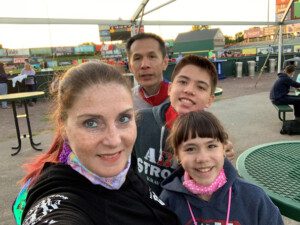 In January 2018, my world was turned upside down after doctors told me I had a ganglion cyst on my foot. Prior to that, my life was adventurous and, in a word, awesome! As a wife, mother of twins and having a fun job of being a travel agent, things were going well.
In January 2018, my world was turned upside down after doctors told me I had a ganglion cyst on my foot. Prior to that, my life was adventurous and, in a word, awesome! As a wife, mother of twins and having a fun job of being a travel agent, things were going well.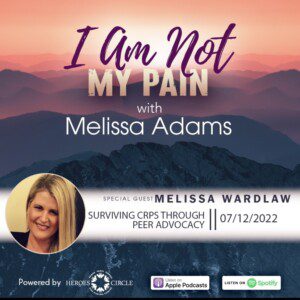 CRPS Warrior Melissa Wardlaw joined Melissa Adams on the “I Am Not My Pain” podcast on an episode titled, “Surviving CRPS Through Peer Advocacy.”
CRPS Warrior Melissa Wardlaw joined Melissa Adams on the “I Am Not My Pain” podcast on an episode titled, “Surviving CRPS Through Peer Advocacy.”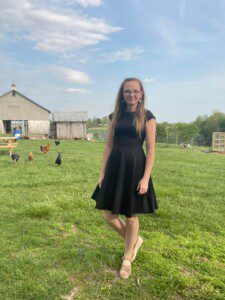 My name is Brittany Foe. I was just 12 years old when my first flare reared its ugly head in 2006. I was frightened, not knowing what was happening. The roller coaster of emotions over the next two years were daunting. In 2008 I heard the words that changed my life, “You have RSD”. At this point I was wheelchair bound, had been in and out of school on homebound, and had been told numerous times that I was faking it.
My name is Brittany Foe. I was just 12 years old when my first flare reared its ugly head in 2006. I was frightened, not knowing what was happening. The roller coaster of emotions over the next two years were daunting. In 2008 I heard the words that changed my life, “You have RSD”. At this point I was wheelchair bound, had been in and out of school on homebound, and had been told numerous times that I was faking it. Written by Dwain A. Vaughns, II
Written by Dwain A. Vaughns, II